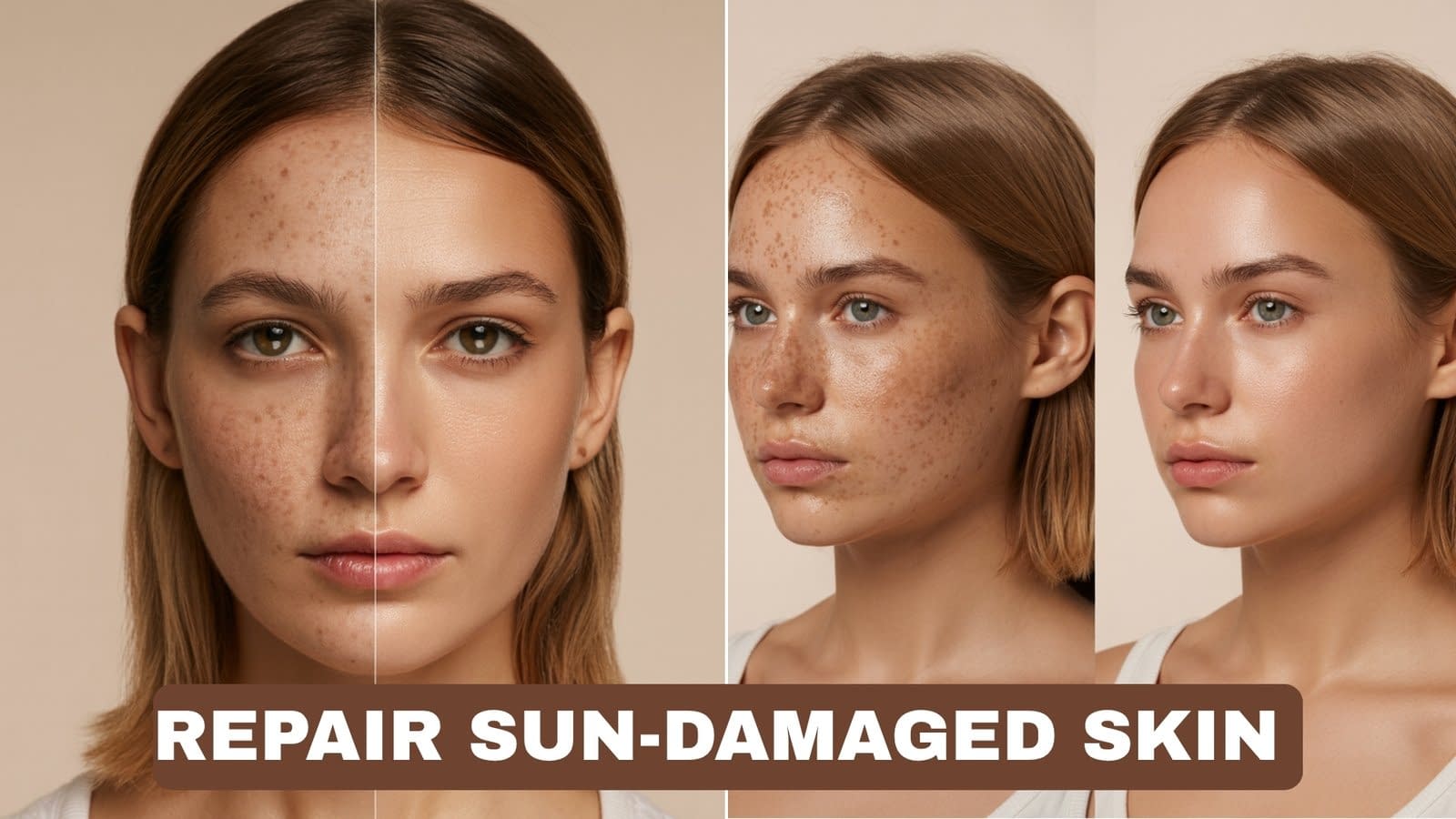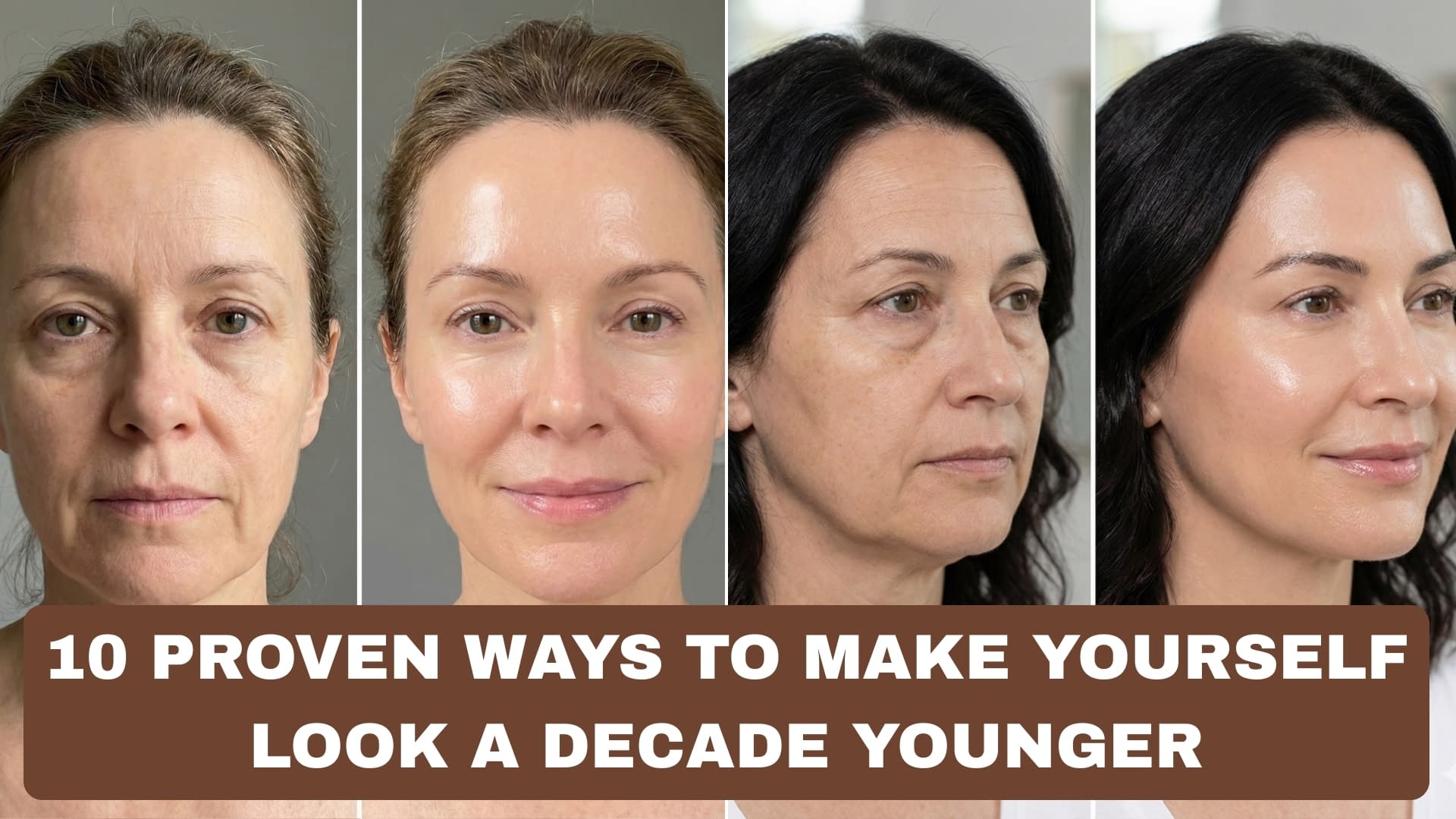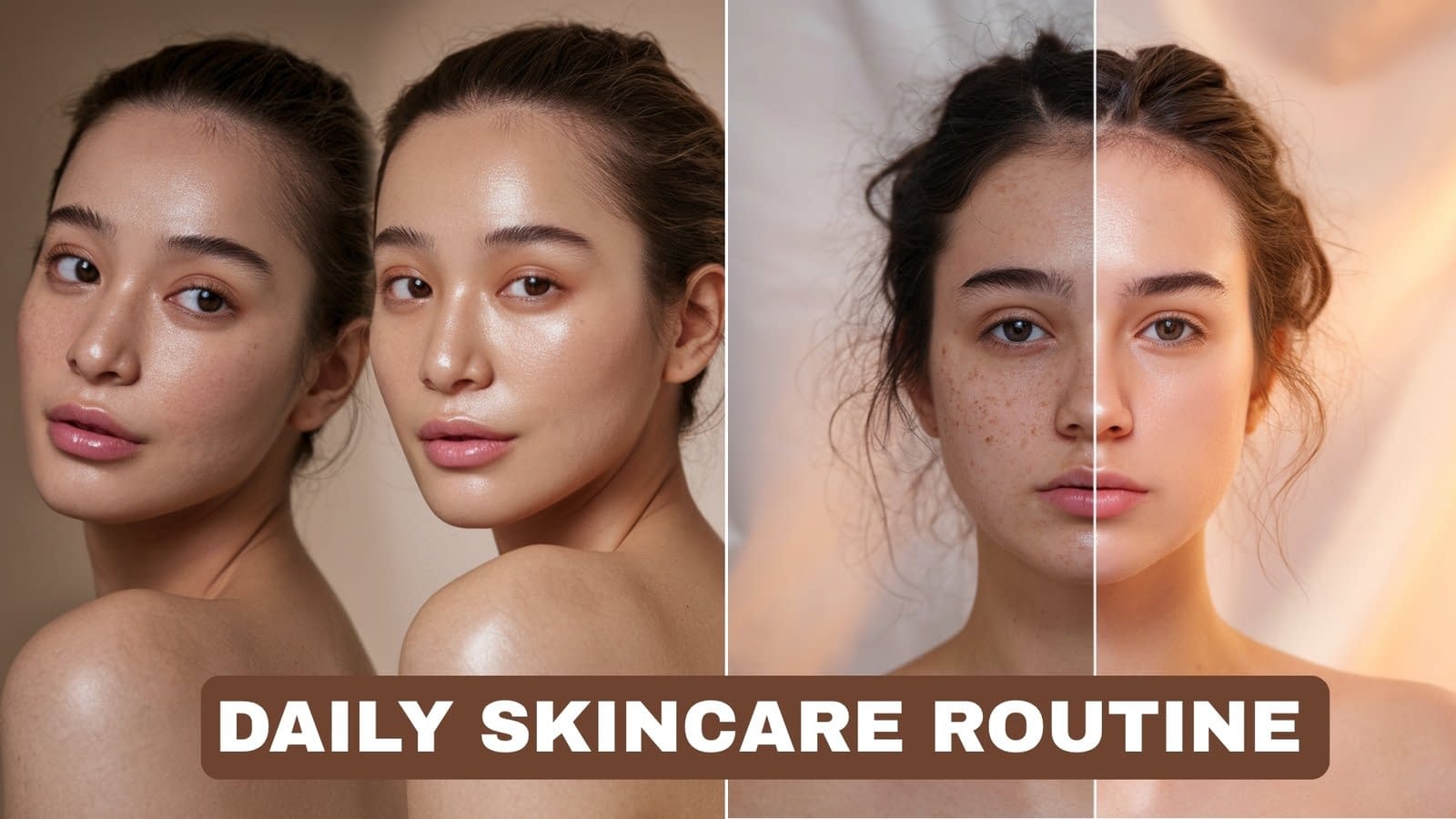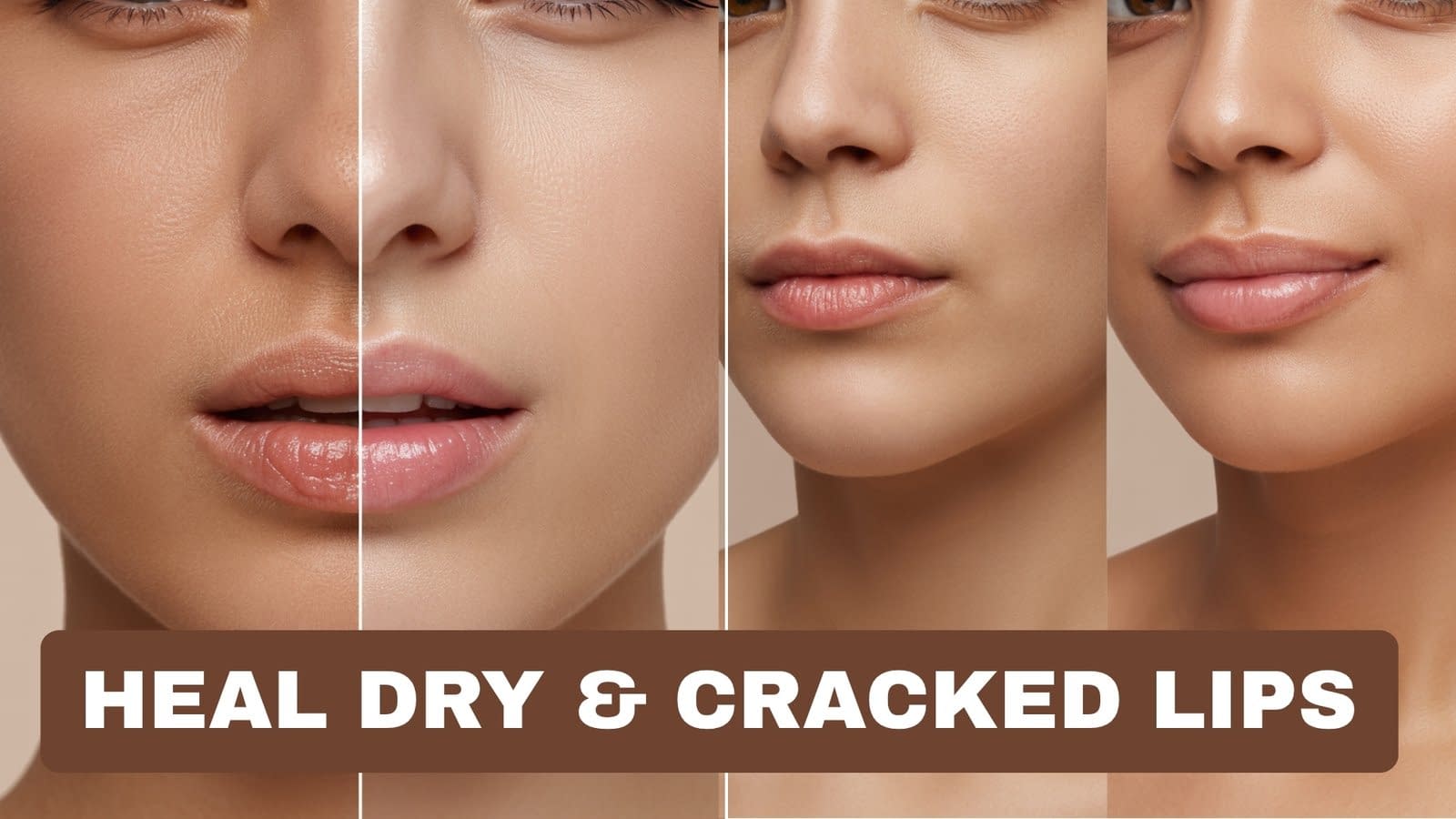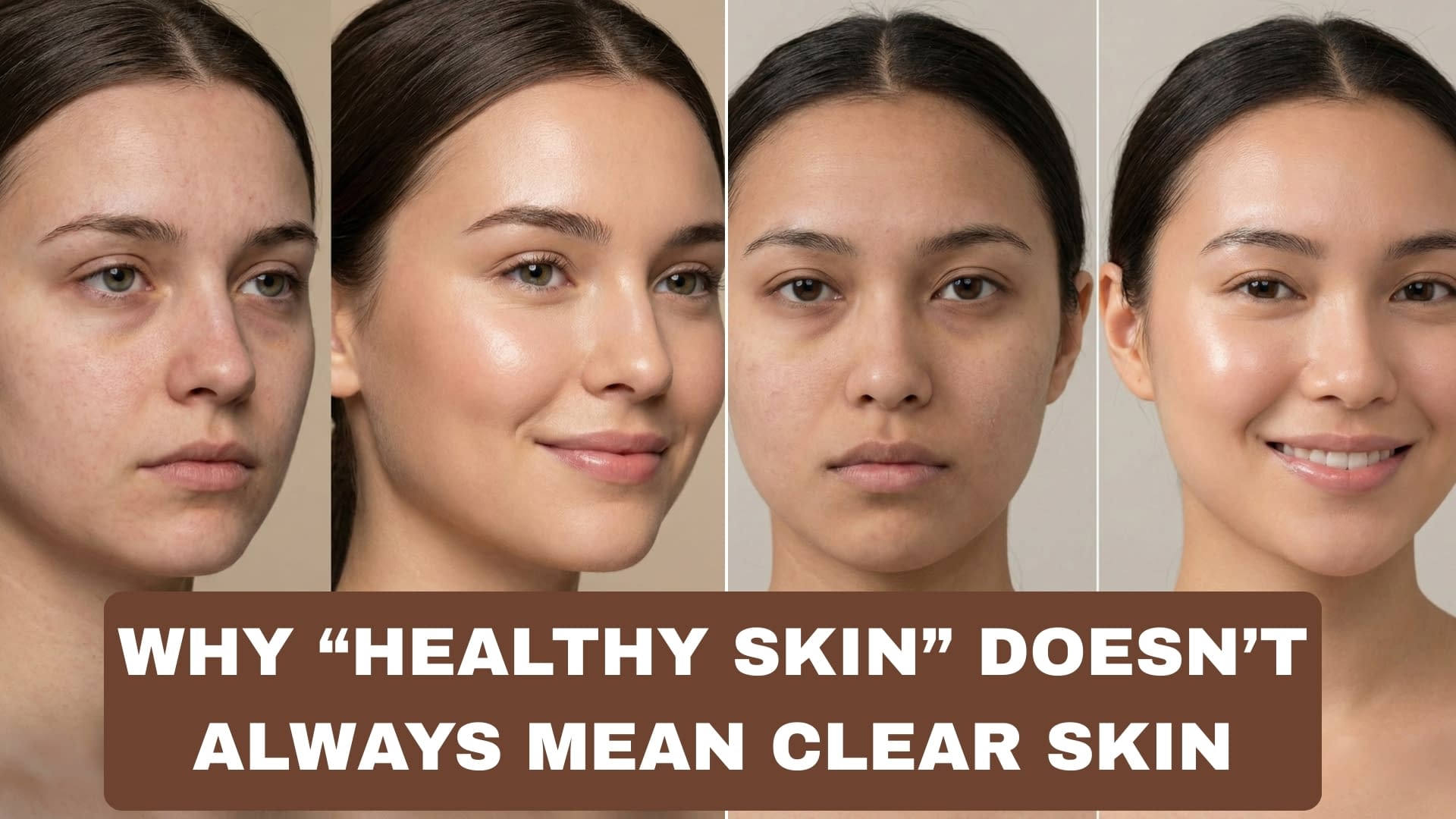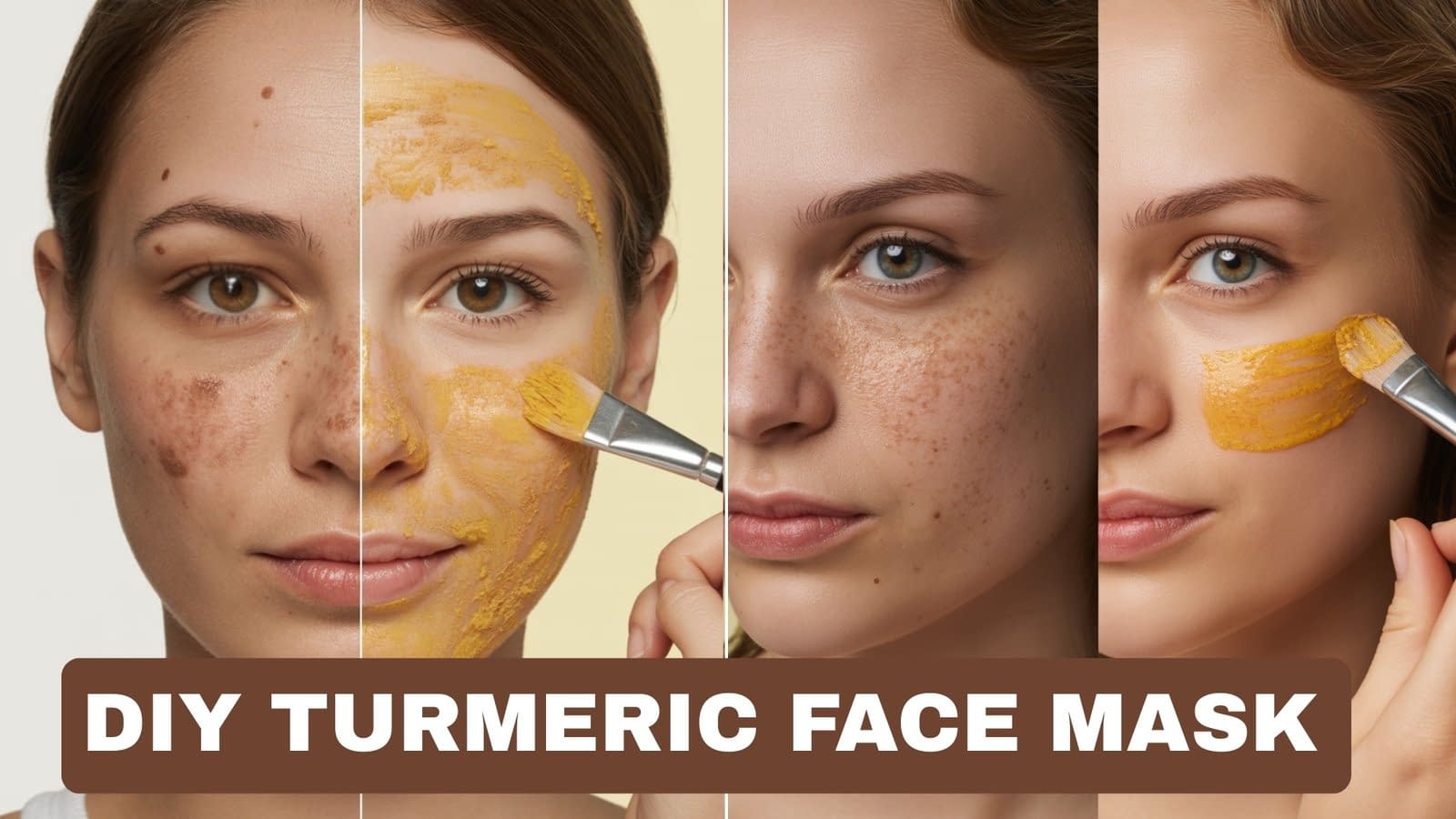Sun damage is sneaky: it builds up slowly, then one day you look in the mirror and your face has a map of uneven color, texture, and fine lines. The good news: the body can repair itself and modern dermatology has real tools that work. The bad news: it takes patience and discipline. This is a practical plan — immediate fixes to reduce the “yesterday” level of puff and color, and long-term strategy to actually fade sunspots, improve texture, and protect new skin from getting wrecked again.
Spot the Signs: How to Tell If Your Skin Is Sun-Damaged
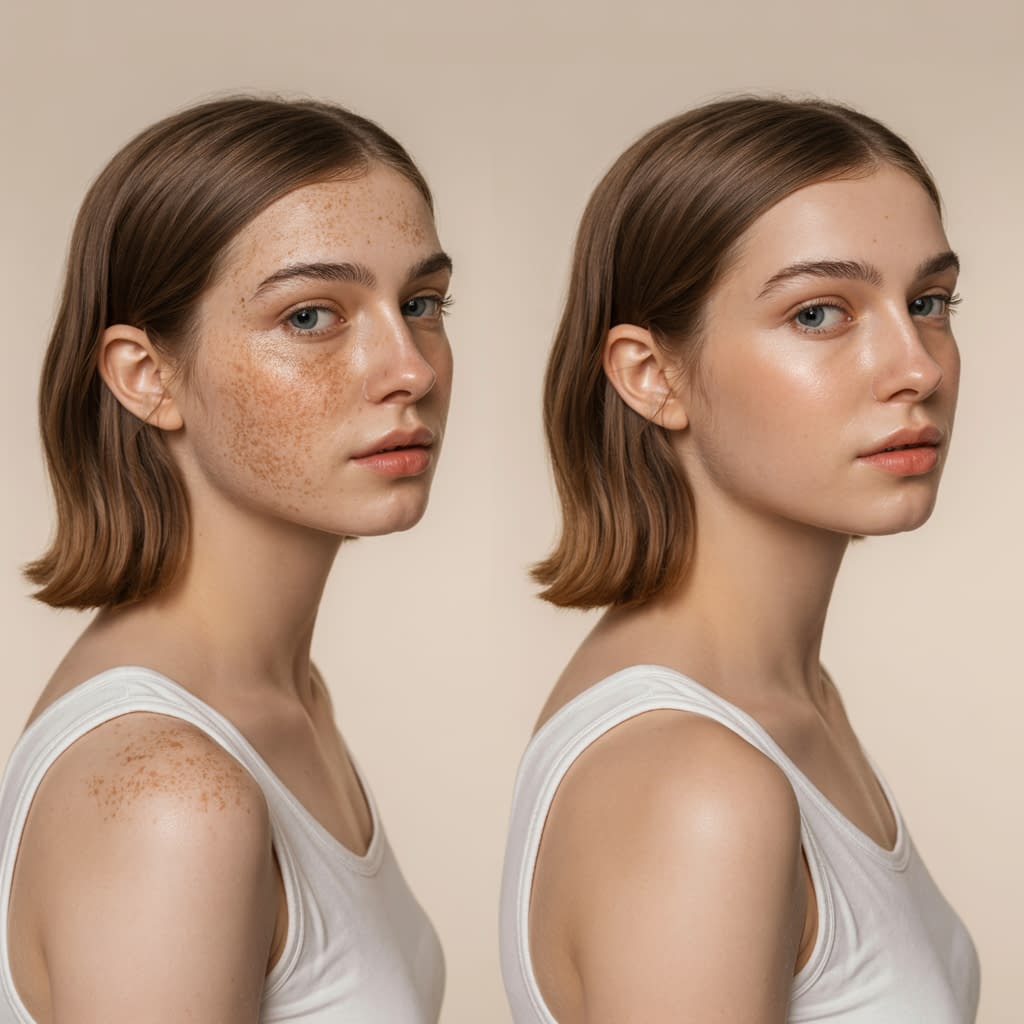
Be honest. If you’ve spent years outdoors without protection, you probably have some degree of sun damage. Look for these common signs:
- Pigment changes: flat, brownish spots (solar lentigines/age spots), irregular darker patches, or freckling concentrated on the face, chest, hands, and forearms. These are classic sunspots. Mayo Clinic
- Uneven tone and blotchiness: diffuse brown patches or areas of hyperpigmentation (including melasma).
- Fine lines and rough texture: thinning and loss of elasticity from collagen damage.
- Redness, broken capillaries, and a leathery appearance with long-term exposure.
- White spots or loss of pigment in some areas (less common).
How to check: stand in natural light, clean face, and use a magnifying mirror. If you see distinct flat brown spots that weren’t there before, that’s sun damage, not just “bad lighting.”
Why Sun Damage Happens: The Science Behind Dark Patches and Wrinkles
Two forces wreck skin: UV-driven DNA/stress damage and the inflammation cascade that follows.
Step-by-step science you can use:
- UV exposure triggers melanocytes. When skin cells are damaged by UV (UVA and UVB), melanocytes ramp up melanin production as a defensive response. That’s how dark patches form and deepen.
- Chronic UV exposure damages collagen and elastin. Collagen breakdown = fine lines and looser skin.
- Oxidative stress and inflammation keep the pigment machinery turned on after sun exposure — that’s why antioxidant strategies help.
- Repeat exposure locks it in. New UV on unprotected, inflamed skin makes spots worse.
Translation: to fade spots you must (A) prevent more UV, (B) calm inflammation/oxidation, and (C) encourage controlled cellular turnover so old pigment is shed and replaced with normal-color skin.
First Things First: Daily Habits That Stop Further Damage
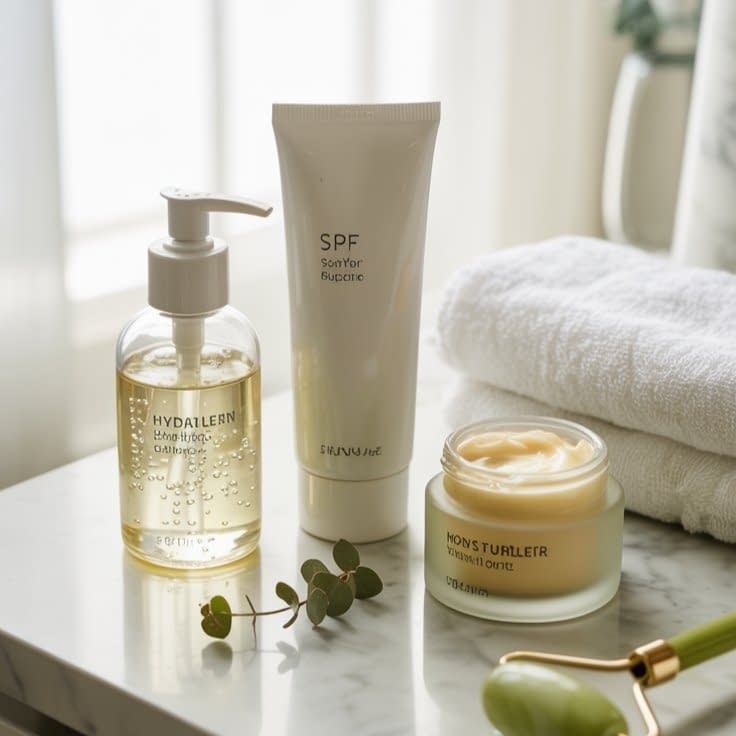
If you ruin the repair process with carelessness, nothing else matters. This is the top priority.
Daily checklist (do these every single day)
- Sunscreen — every morning, all exposed skin. Broad-spectrum SPF 30+ or higher; use at least ¼ teaspoon for face and 1 teaspoon for neck/chest. Reapply every 2 hours when you’re outdoors. If indoors but near windows, keep using it — UVA travels through glass. American Academy of Dermatology
- Wear sun-protective clothing and wide-brimmed hats when outdoors for long periods.
- Avoid direct sun in peak hours (10am–4pm) when possible.
- Skip tanning beds — they’re basically an accelerated damage program.
- Don’t pick at patches (they scar and trigger more pigment).
- Add an antioxidant in AM (vitamin C) under sunscreen to help neutralize free radicals. (More on serums below.)
If you want lighter skin long-term, protect it like you mean it starting today.
Gentle Cleansing and Exfoliation to Renew Dull Skin
You need to increase cell turnover without wrecking the barrier. Do that in measured steps.
Cleansing & exfoliation routine (step-by-step)
- Gentle cleanser daily: Use a pH-balanced gentle cleanser morning and night. Don’t scrub.
- Chemical exfoliation (start here): Use a BHA or AHA product to promote cell turnover and help pigment slough off. For most people:
- Salicylic acid (BHA) if pores/oil and pigmentation coexist.
- Lactic or glycolic acid (AHA) for surface texture and gentle exfoliation.
Start with 1–2 nights/week, then build to 2–3 nights as tolerated.
- Avoid over-exfoliation: redness, burning, or peeling = you’re overdoing it. Back off and rebuild slowly.
- Soothe after exfoliation: apply hydration (hyaluronic acid, glycerin) and a moisturizer with barrier-repair ingredients (ceramides).
- Retinoids: Once your skin tolerates acids, introduce a retinoid (see section 5). Retinoids accelerate turnover and improve pigment long-term, but they increase sun sensitivity, so sunscreen is non-negotiable.
Why this helps: steady, controlled turnover helps the skin replace pigmented cells with normal ones — but only if you don’t shred the barrier doing it.
The Power Players: Serums and Ingredients That Actually Fade Pigmentation
There are no harmless instant fixes, but these ingredients have the evidence and dermatology track records:
Top clinically backed ingredients and how to use them
- Hydroquinone (prescription or 2% OTC in some regions): gold-standard skin-lightener that inhibits melanin formation. Often used in short-term cycles or in triple-combination formulas for stubborn spots. Use under dermatologic supervision for longer plans. PMC
- Retinoids (tretinoin, adapalene, retinol): increase turnover and reduce pigment over months; pair with sunscreen.
- Azelaic acid: brightens and calms inflammation; good for sensitive or rosacea-prone skin.
- Vitamin C (L-ascorbic acid): antioxidant that reduces pigment formation and protects from oxidative damage — use in morning under sunscreen. PMC
- Niacinamide: reduces transfer of pigment to skin cells and strengthens barrier — good with other actives.
- Tranexamic acid: helpful for melasma and stubborn facial hyperpigmentation in clinic/topical forms.
- Kojic acid, arbutin, licorice extracts: milder options that inhibit melanin production and suit maintenance routines.
- Chemical exfoliants (AHAs/BHAs): help remove excess pigment and increase penetration of brightening serums.
How to build a routine (practical layering)
- AM: gentle cleanse → antioxidant serum with vitamin C → moisturizer (with niacinamide if desired) → broad-spectrum sunscreen SPF 30+.
- PM: gentle cleanse → retinoid (start 2 nights/week) or AHA/BHA on alternate nights → hydrating moisturizer. Rotate to avoid irritation (don’t layer strong acids + retinoid the same night initially).
- For stubborn spots: consider a dermatologist-directed protocol — e.g., hydroquinone + retinoid + mild steroid (short term) or prescription-strength combos.
Caveat: some ingredients (hydroquinone, prescription retinoids, professional peels/lasers) require physician guidance. Don’t DIY high-strength combos without supervision.
Hydration Rescue: Restoring Moisture to Parched, Sun-Exposed Skin
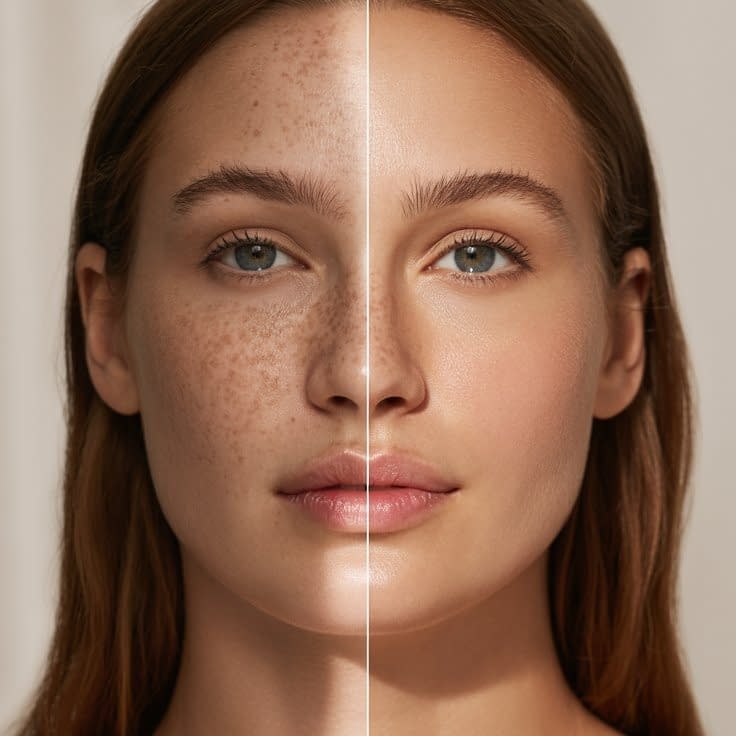
Sun damage often comes with a compromised barrier. Hydration repairs function and makes other treatments gentler.
Hydration & barrier repair steps
- Humectants: use hyaluronic acid or glycerin serums to draw water in. Apply to damp skin then seal with moisturizer.
- Barrier repair: night creams with ceramides, cholesterol, and fatty acids rebuild lipid layers. Niacinamide helps too.
- Occlusive layer if needed: a thin petrolatum or occlusive balm at night on dry areas locks moisture in.
- Avoid harsh astringents or alcohol-heavy toners that strip the barrier.
- Drink water regularly — hydration helps but is not a miracle. It supports the tissue repair process.
Why it matters: a healthy barrier tolerates actives and heals pigment better. If your skin flakes and bleeds, you can’t treat it effectively.
Sunscreen Rules You Can’t Afford to Break (Even Indoors)
This is the single most important part of repair. If you fail here, everything else is wasted.
Simple, strict sunscreen protocol
- Broad-spectrum SPF 30+ every day on all exposed areas — face, neck, chest, hands. Higher SPF if you have melasma or history of strong tanning. American Academy of Dermatology
- Apply enough: roughly a teaspoon for the face & neck; 1 ounce (a shot glass) for the body when exposed. Most people apply 1/4 of what they need — that’s why SPF looks lower than labelled. American Academy of Dermatology
- Apply 15 minutes before sun exposure and reapply every 2 hours when outdoors or after sweating/swimming.
- Indoors near windows: UVA can penetrate glass — consider daily sunscreen if you sit by big windows or drive a lot. American Academy of Dermatology
- Physical sunscreens (zinc/titanium) are good for sensitive skin and melasma. Tinted mineral sunscreens also help avoid flashback under photos.
- Use additional protection: hats, UPF clothing, sunglasses, and shade. Sunscreen is one layer — not an excuse to bake in the sun.
If you do nothing else, use sunscreen properly and reapply. Repair won’t happen under ongoing assault.
Professional Treatments Worth Considering: From Peels to Lasers
When topical treatments stall or spots are deep, in-office options accelerate results. Discuss risks and downtime with a board-certified dermatologist.
Popular, effective in-office options
- Chemical peels (TCA, glycolic, salicylic, Jessner): controlled exfoliation that reduces superficial pigmentation and improves texture. Multiple sessions often required.
- Fractional lasers (non-ablative and ablative): can penetrate to remodel collagen and target pigment; fractional lasers are widely used for sunspots and texture. Mayo Clinic
- IPL (intense pulsed light): targets melanin and vascular changes; effective for multiple small brown spots and redness in lighter skin types (skin-type dependent).
- Microneedling (often with topical serums or PRP): helps remodel skin and improve tone; better for texture and mild pigmenting when combined with other treatments.
- Cryotherapy or spot-treatment liquid nitrogen: used for discrete solar lentigines but may cause hypopigmentation in darker skin types.
- Combination protocols: many clinics combine peels, lasers, and topical maintenance for best results.
Important: deeper procedures carry more downtime and risk (scarring, pigment changes), and some treat pigment poorly in darker skin unless the practitioner is experienced. Always seek a qualified, experienced dermatologist or laser surgeon and expect multiple sessions for best outcomes. Mayo Clinic
At-Home DIY Remedies That Don’t Wreck Your Skin Barrier
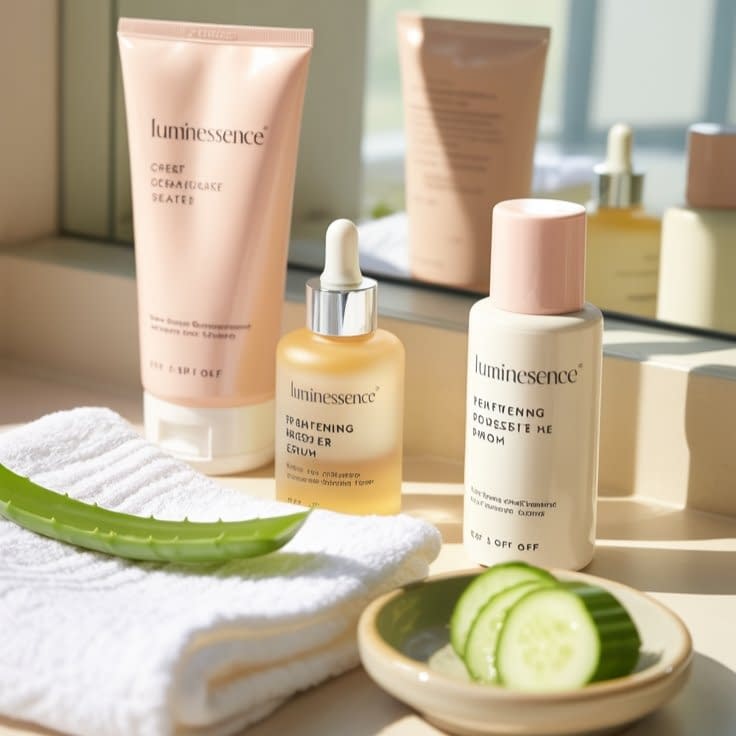
You don’t need to slap lemon juice on your face. Here are safe DIY options and what to avoid.
Do (safe, sensible)
- Aloe vera gel (pure): soothing, hydrating, and safe for some mild inflammation.
- Oatmeal masks: anti-inflammatory and gentle; good for calming irritated, sun-stressed skin.
- Honey + yogurt masks: honey is mildly antimicrobial and humectant; yogurt has gentle lactic acid. Use as occasional treat and rinse off.
- Green tea compresses: provide antioxidants and calm redness.
Don’t (stop right now)
- Undiluted lemon juice, vinegar, or undiluted acids applied raw — high risk of burns, post-inflammatory hyperpigmentation, and barrier damage.
- Physical scraping or aggressive scrubs that shred the barrier and make pigment worse.
- DIY “peels” with household acids unless formulated by professionals.
Rule: if it stings loudly, it’s damaging. Small stings are expected with retinoids/actives, but household acid burns are different — they scar and hyperpigment.
Lifestyle Upgrades: Diet, Sleep, and Habits That Boost Skin Repair
Skin repair is slower or faster depending on your life. Don’t ignore the basics.
Daily lifestyle checklist
- Improve sleep: 7–9 hours supports repair hormones and collagen synthesis.
- Eat whole foods with antioxidants: colorful fruits and vegetables, omega-3s (fatty fish, walnuts), vitamin C (citrus), zinc, and protein for repair.
- Limit alcohol and smoking: both worsen inflammation and collagen breakdown.
- Manage stress: chronic stress dysregulates hormones and slows healing — brief daily stress reduction (breathing, walk) helps.
- Exercise: improves circulation; better blood flow helps tissue repair. Just protect your skin if exercising outdoors (sunscreen, hat).
These are boosters. They won’t erase spots alone, but they speed the process and make treatments work better.
How Long It Takes to See Real Results — and How to Stay Consistent
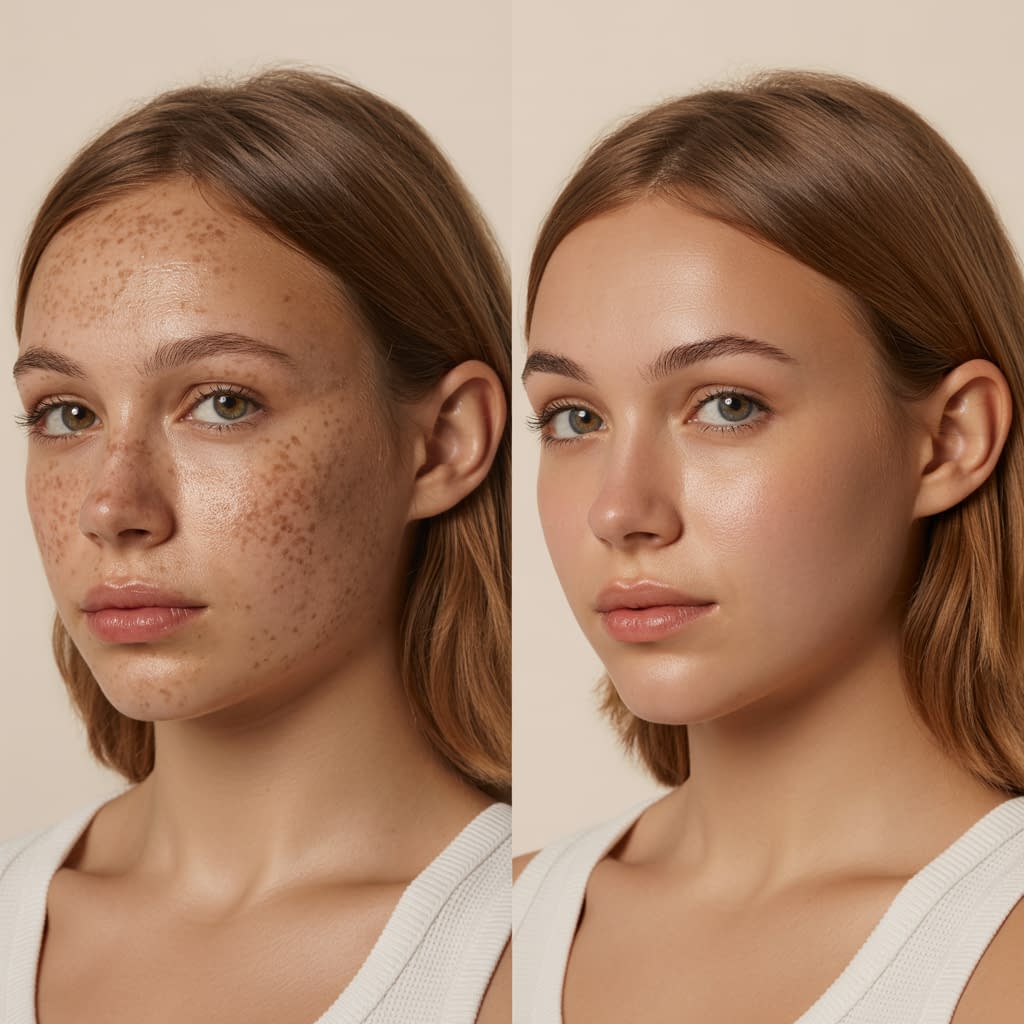
No, you won’t be spot-free in two days. Expect realistic timelines and milestones.
Realistic timeline
- Immediate (days–2 weeks): skin looks calmer with proper hydration and sunscreen; redness and surface dullness improve.
- Short term (6–12 weeks): most topical regimens (retinoids, vitamin C, AHAs, niacinamide) begin to show visible improvement in tone and reduced pigmentation. Clinical studies often report measurable changes around the 8–12 week mark. PMC
- Medium term (3–6 months): continued fading of sunspots, improved texture; retinoid-driven collagen remodeling begins to deliver subtle tightening.
- Long term (6–12 months +): significant improvement for many people with consistent routine ± in-office treatments; stubborn lentigines may require professional removal. Laser/peel courses shorten this timeline but have downtime and risk.
Consistency plan (step-by-step)
- Commit to daily sunscreen and your AM/PM product routine for at least 12 weeks before assessing major changes.
- Track progress with photos under consistent lighting every 4 weeks.
- If after 12 weeks you see minor improvements but not enough, consult a dermatologist for escalation (stronger topical, peel, or in-office procedure).
- Expect maintenance: once faded, pigment can return if you relax protection.
Bottom line: patience + consistency beats frantic product-hopping.
When to See a Dermatologist Before Things Get Worse
Some signs mean you shouldn’t DIY — book the appointment.
See a dermatologist if:
- Spots change rapidly in size, color, or shape, or bleed — rule out skin cancer.
- Pigmentation is deep, widespread, or resistant after 3 months of consistent topical therapy.
- You have darker skin (Fitzpatrick IV–VI) and are worried about post-inflammatory hyperpigmentation — certain treatments (lasers, peels) must be chosen carefully for safety.
- You want professional procedures like lasers, chemical peels, or prescription hydroquinone/retinoid combos — discuss risks, downtime, and realistic results.
- You have persistent inflammation, scaling, or signs of infection.
Bring photos, a list of products you’ve used, and a timeline of when damage started. A good dermatologist will recommend a staged plan — safe, evidence-based, and matched to your skin type.
Final Words
You can’t fully rewind decades of careless sunbathing in a weekend. But you can markedly improve tone, fade dark patches, and restore healthier skin if you act sensibly: protect relentlessly, use proven actives (retinoids, vitamin C, azelaic acid/niacinamide, chemical exfoliants), hydrate and repair the barrier, and consider professional treatments for stubborn spots. Expect 8–12 weeks for meaningful change with topicals and be realistic — stubborn lentigines often need in-office procedures.
Final checklist — do these starting today:
- Apply broad-spectrum sunscreen every morning and reapply when needed. American Academy of Dermatology
- Start (or continue) a simple, consistent AM/PM routine: antioxidant AM, retinoid or AHA/BHA PM, plus moisturizer. PMC+1
- Book a dermatologist consult if spots are changing or resistant. Mayo Clinic


